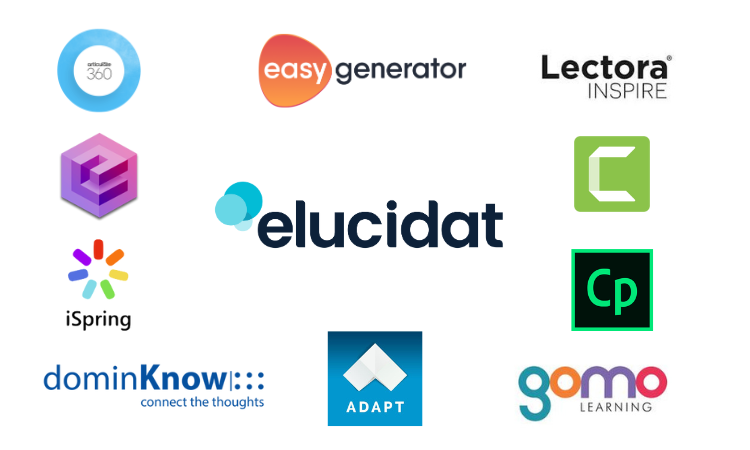Training needs analysis: How to identify the training needs of employees
8 minute read
Good training can have a transformative effect on an organization. It can improve performance, efficiency and, ultimately, revenue by giving employees the requisite know-how to succeed. Ineffective training, on the other hand, can have the opposite effect. A training needs analysis is often the difference between good and bad training.

Creating a training course without a needs analysis is the L&D equivalent of trying to set off with the parking brake engaged. Without one, training is aimless and is unlikely to yield the results that you set out to achieve. A training needs analysis provides purpose.
With that in mind, it’s an incredibly important concept for training leaders to understand. Here, find out what a needs analysis is, what its benefits are, how to conduct one, and more.
What is a training needs analysis?
A training needs analysis is a process which identifies skill gaps and opportunities to enhance knowledge for the purpose of improving employee performance. It is the foundation of any training program, outlining which factors you need to prioritize while shaping the direction of your L&D strategy.
Create your training with Elucidat
Fundamentally, a training needs analysis recognizes the difference between current performance or knowledge levels, and desired employee output. It highlights everything from types of training required to the cost and resource outlay necessary to make it happen. It’s a crucial concept for any L&D professional to consider.
Types of training needs analysis
There are two main types of training needs analysis – knowledge and skills. Both can be analyzed at the same time, or you can focus your analysis on one subsect.
A training needs analysis of knowledge base is crucial for getting to grips with how informed an employee is about the industry in their job role. Training needs analysis can help identify knowledge that employees need to progress, and comprises of issues such as compliance and regulations while also covering general best practice.
For those with a broad knowledge base, a training needs analysis of skills can assess how equipped they are to actually carry out the job at hand. As well as practical skills, this can cover soft skills such as communication and empathy.
What are the benefits of conducting a training needs analysis?
The primary benefit of a training needs analysis is that it allows you to identify potential issues at the root. Knowledge gaps can become a problem, if left unaddressed, and these are highlighted plain and clear by a training needs analysis. This allows you to plug these gaps and tackle them head-on, rather than only becoming aware of them when issues arise down the line.
As well as being proactive with pain points, it also helps you plan ahead. Putting a long-term training plan in place is exponentially more straightforward when you clearly know which employees or departments need specific training.
Another benefit is that it ensures no one’s time is wasted. There are only so many hours in the workday, and you don’t want employees to be taking part in training they don’t need to. A need analysis identifies exactly which training is suitable for which employees, creating a personalized training plan in the process.
Finally, it helps L&D teams to prioritize training needs. The analysis will earmark priority levels, giving a clear view over which training areas are most important and which can be completed further down the line.
How to conduct training needs analysis
When it comes to conducting a training needs analysis, there are various methods which can be used. Not every method will be appropriate to your requirements and there’s no black or white rule for which type is best. You can use any number of different training needs analysis methods that best fit in with your goals. These can include:
- Interviews
- Interviews provide personalized insights through one-on-one or group discussions, revealing specific skills gaps and challenges. They offer a platform for employees to share their concerns and aspirations directly.
- Work examination
- This method involves analyzing job descriptions and work processes to pinpoint discrepancies between current practices and desired standards. It’s effective in identifying areas where training can directly improve performance and efficiency.
- Assessments
- Assessments are structured evaluations of employee skills and knowledge, offering quantifiable data on their capabilities. They are particularly useful for measuring technical skills and job-specific knowledge.
- Observations
- Observations involve monitoring employees in action, revealing practical skills gaps and behavioral patterns in real-world scenarios. This method is invaluable for understanding the application of skills and knowledge on the job.
- Questionnaires
- Questionnaires allow for scalable feedback collection from a large employee base, assessing their self-perceived training needs and preferences. They are useful for identifying common training themes and employee e-learning styles.
- Competitive analysis
- Competitive analysis involves researching industry benchmarks and trends to understand essential training standards in your field. It helps in identifying critical training areas for maintaining a competitive edge.
Whichever methods you choose to utilize, putting a needs analysis together requires a few common considerations. Here, we’ve provided a brief step-by-step guide to conducting a training needs analysis.
Step one: determine desired outcomes
Prior to kicking off, articulating expected business outcomes of the training is a must. The ultimate goal of training informs the process of the entire needs analysis, linking it to a business objective. Here, consider the question ‘what are the indicators that training has been successful?’ and gear your expectations around the answer.
Step two: identify employee behavior needed to reach the desired outcome
At this stage, recognize the competencies that are linked to the business outcomes at hand. To do so, you can collect data from SMEs in the form of interviews, surveys or focus groups.
This weeds out competencies that aren’t critical and ensures the most important behaviors are considered throughout the needs analysis. For example, a survey featuring rating scales such as the below question, could be used to link employee behavior with role success:
How important is empathy for successful performance in a team leader position?
1 – Not at all
2 – Slightly
3 – Somewhat
4 – Considerably
5 – Crucial
Step three: Evaluate trainable competencies
With competencies and behaviors outlined, you need to determine which ones are trainable. Some are competencies which should be in place prior to being hired, such as sales people being able to initiate conversation with strangers. Those which are suitable for training can then be evaluated.
Determine the extent that your employees possess these competencies through performance evaluations and assessments. You can also use multiple assessors, such as peers or supervisors, to provide 360 feedback.
Step four: Identify gaps
Use the results of the previous step to assess where the need for competency improvement is evident. This will also help outline how many employees require training and in which exact areas.
In order to achieve this, however, you need to establish what meets the threshold of a performance gap. This will, of course, vary from organization to organization based on personal standards. Those who fall below your set threshold will require targeted training.
Step five: Training needs prioritization
With performance and knowledge gaps identified, employers should then determine the pervasiveness of different needs. Consider the business-critical nature of the competency, as well as the percentage of the workforce who require training in it before deciding which direction to go in.
Once your training is prioritized, you’re nearly there. All that’s left is to determine which training methods will gain the best results, as well as putting the frameworks in place for training evaluation.
Asking the right questions when conducting a training needs assessment
When you conduct a training needs analysis the process isn’t just about identifying specific training needs; it’s about asking the right questions to ensure the training content is effective and truly beneficial for employees. To get you on the right track, here are the crucial questions that form the backbone of any effective training needs assessment.
1. What’s the actual problem?
Understanding the core issue is vital. Is the goal to drive sales, enhance customer satisfaction, or retain top talent? Identifying the real problem is the first step in the needs analysis process.
2. Who is it for?
Knowing your audience is key in training and development. Assess who the training is aimed at, what they need, and what will engage them effectively.
3. Why isn’t the target audience doing that thing you need them to do already?
It’s important to understand whether the audience is aware of the need for change. Assess if they have the necessary skills, or if there’s a gap in understanding or motivation.
4. What is likely to actually help people make change/improvement?
Consider what type of resource or task analysis will truly aid in making the desired improvements. This involves aligning the training method with the audience’s needs.
5. What’s worked before (and what didn’t)?
Look at the data from previous training initiatives. Analyze what aspects contributed to a successful training program and what aspects fell short.
6. What one thing are you going to do really well?
Focus is crucial. Determine where to concentrate your efforts to ensure the investment in training yields substantial returns.
7. Are you sure they need you to actually create something for them?
Sometimes, the required content already exists. Assess if guiding employees to existing resources might be more beneficial than creating new content.
By conducting a training needs assessment with these questions, you ensure that your training strategy is not just a shot in the dark but a well-informed decision that aligns with your organization’s goals.
Final thoughts
A training needs analysis is arguably the most important part of the entire training process. It establishes the gap between where you are and where you want to be, while outlining the roadmap of how to get there. The importance of training needs analysis cannot be overstated.
Once you’ve conducted your analysis and know exactly where you want your training to take you, you need a helping hand to bridge the gap. You need to determine how you’ll bring your training to life. If elearning is part of your plan, Elucidat’s authoring tool is here to help. Packed with features which can facilitate elearning creation at scale, our industry-leading platform takes training to the next level.
Interested to find out what Elucidat can do for you? Book a personalized demo today to see the platform in action.



